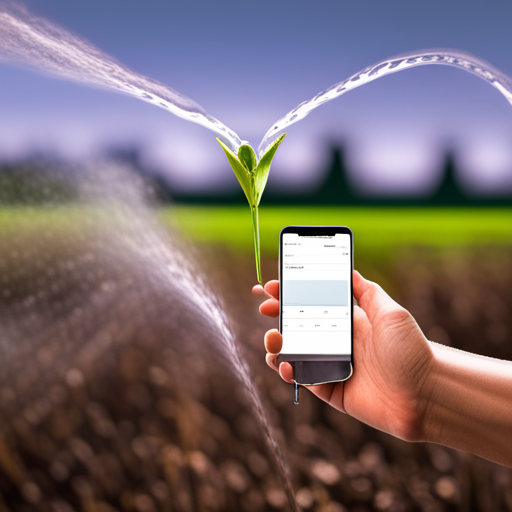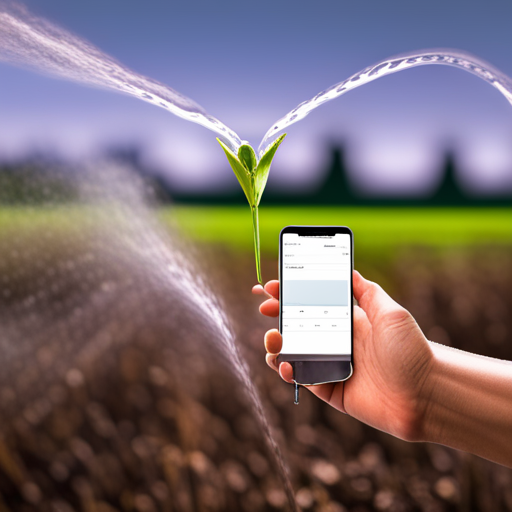Soil sensors play a crucial role in precision agriculture by providing valuable information about the soil conditions. They help farmers make informed decisions regarding irrigation, fertilization, and other agronomic practices. Soil sensors come in various types, each with its own set of capabilities and applications. In this article, we will explore the different types of soil sensors and their functionalities.

Soil Moisture Sensors:
Soil moisture sensors are designed to measure the amount of water content in the soil. They provide information about the soil's ability to retain water and its overall moisture level. This data is vital for irrigation management as it helps farmers determine when and how much water to apply. There are several types of soil moisture sensors available:
a. Tensiometers:
Tensiometers measure the soil moisture tension, which indicates the force required to extract water from the soil. They consist of a ceramic cup filled with water and a vacuum gauge that measures the tension. Tensiometers are commonly used in determining the optimal time for irrigation.
b. Capacitance Sensors:
Capacitance sensors measure the dielectric constant of the soil, which changes with soil moisture. They use two electrodes inserted into the soil to measure the electrical capacitance. These sensors are widely used due to their accuracy, reliability, and ease of use.
c. Time Domain Reflectometry (TDR) Sensors: TDR sensors measure the travel time of an electromagnetic pulse as it passes through the soil. The travel time is directly related to the soil moisture content. TDR sensors provide accurate readings but are relatively expensive compared to other types of soil moisture sensors.
d. Electrical Resistance Blocks: Electrical resistance blocks consist of two electrodes embedded in a gypsum block or other porous material. As soil moisture increases, the electrical resistance decreases. These sensors are simple, cost-effective, and widely used in agriculture.
Soil pH Sensors:
Soil pH sensors measure the acidity or alkalinity of the soil, which is an essential parameter for crop growth. Different crops have different pH requirements, and maintaining the optimal pH level is crucial for nutrient availability and uptake. There are various types of soil pH sensors available:
a. Electrochemical Sensors: Electrochemical sensors measure the electrical potential generated by chemical reactions between the soil and a reference electrode. They provide a direct measurement of pH and are typically affordable and easy to use.
b. Optical Sensors: Optical sensors use indicators that change color depending on the pH level. These sensors measure the color changes and provide pH readings. Optical sensors are often used in combination with electronic devices for accurate and reliable measurements.
Soil Nutrient Sensors:
Soil nutrient sensors measure the concentration of essential nutrients in the soil, including nitrogen (N), phosphorus (P), potassium (K), and other micronutrients. Knowledge of nutrient levels is vital for proper fertilization and optimizing crop growth. Here are a few types of soil nutrient sensors:
a. Ion-Selective Electrodes (ISE): ISE sensors consist of a membrane selective to specific ions and electrodes that measure the electrical potential generated by the ion exchange. These sensors provide accurate and quick measurements of individual nutrient concentrations.
b. Optical Spectrometers: Optical spectrometers analyze the light reflected from the soil to determine nutrient concentrations. They can measure multiple nutrients simultaneously and provide real-time results. However, optical spectrometers are relatively expensive compared to other types of nutrient sensors.
c. Portable Soil Test Kits: Portable soil test kits are simple and cost-effective tools that farmers can use to measure nutrient levels in the field. These kits often utilize colorimetric methods or chemical reactions to estimate nutrient concentrations. While not as precise as other sensors, they offer a quick and convenient way to assess nutrient status.
Soil Temperature Sensors:
Soil temperature sensors measure the temperature of the soil, which affects various biological and chemical processes, including seed germination, nutrient availability, and microbial activity. Accurate soil temperature information helps farmers make decisions regarding planting, irrigation, and other cultural practices. Some common types of soil temperature sensors include:
a. Thermocouples: Thermocouples consist of two different metals connected at one end. The temperature difference between the two junctions generates a voltage, which is converted into temperature readings. Thermocouples are widely used due to their durability and accuracy.
b. Resistance Temperature Detectors (RTDs): RTDs use a coil of wire made from a material with a known resistance-temperature relationship. As the temperature changes, the resistance of the wire changes, allowing for accurate temperature measurements. RTDs offer high accuracy but can be relatively expensive.
c. Thermistors: Thermistors are temperature-sensitive resistors that change their electrical resistance with temperature variations. They provide fast response times and are cost-effective options for soil temperature monitoring.
Conclusion:
Soil sensors are indispensable tools in precision agriculture, providing valuable information about soil moisture, pH levels, nutrient concentrations, and temperature. They help farmers optimize irrigation, fertilization, and other agronomic practices for improved crop production. By understanding the different types of soil sensors and their capabilities, farmers can choose the most suitable sensors for their specific needs. Whether it's monitoring soil moisture, assessing pH levels, measuring nutrient concentrations, or tracking soil temperature, soil sensors play a crucial role in optimizing agricultural practices and ensuring sustainable and efficient crop production.






